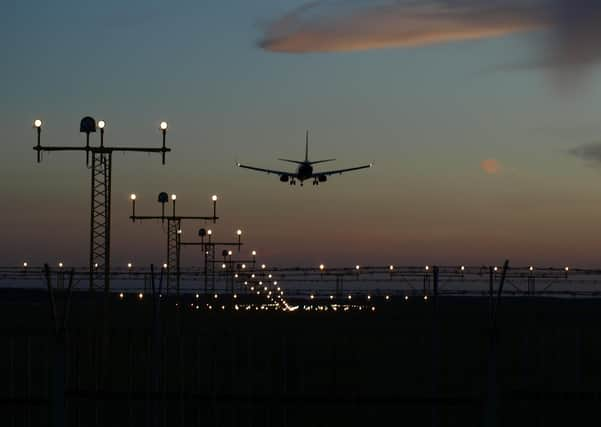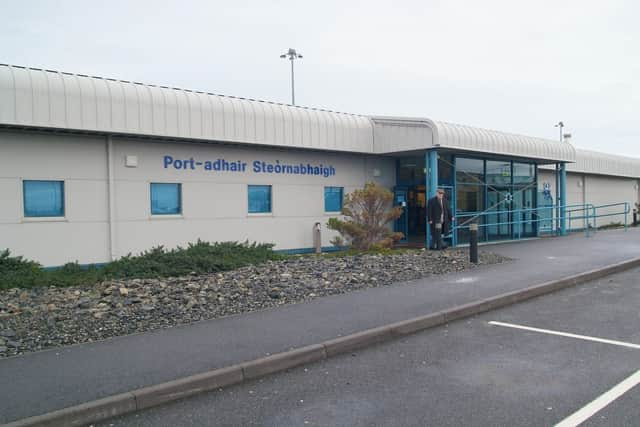New report claims plans to remove air traffic control from the Western Isles are risky and costly


But Highlands and Islands Airports Ltd (HIAL) has strongly defended its plans to relocate all air traffic controllers to a central location, insisting it is the only long-term solution.
Its plans will see the creation of a new remote operations centre in Inverness responsible for air traffic management at airports in Sumburgh, Dundee, Inverness, Kirkwall, Stornoway and Benbecula.
Advertisement
Hide AdAdvertisement
Hide AdHowever, an independent report carried out for the union Prospect is highly critical of the plans.


It was carried out by procurement expert Dave Watson and looked at the overall costs and risks of HIAL’s proposal.
It also looked at the alternatives, as well as the impact on local communities and the level of engagement.
The key findings of Prospect’s independent report were:
• The remote towers programme will take at least £18m of economic benefit from island economies;
Advertisement
Hide AdAdvertisement
Hide Ad• HIAL’s own scoping study identified the remote towers option as “the most difficult and risky to implement”;
• HIAL has only published a redacted business case for the proposal, and implementation costs have already almost doubled to £33.5m with lifetime costs £70m higher than the status quo;
• HIAL has failed to learn the lessons of a National Audit Office report into IT procurement by the Scottish Government with engagement and staff buy-in in particular well below optimal;
• Early adopters of new technology like HIAL, not only face a risk of functionality but also that the technology is quickly updated;
Advertisement
Hide AdAdvertisement
Hide Ad• Safety and operational concerns have been raised including, the breakdown of data transmission systems, cyber-security, weather assessment, impact on human performance and managing the need for ratings for more than one tower in a single shift.
• The scoping study took place pre-Covid and does not take into account any potential impact of the pandemic on the aviation industry as a whole.
David Avery, Prospect negotiator, said: “From day one HIAL has presented this as a done deal with negligible consultation, even less transparency, and bad faith.
“Prospect and its members in HIAL are not against reasoned changes to the technology and the operating procedures of air traffic control in the Highlands and Islands but these plans are not fit for purpose.
Advertisement
Hide AdAdvertisement
Hide Ad“The plans will remove vital high value jobs from communities which can little afford to lose them, totalling at least £18m.
“It is beyond belief that HIAL continues to press on with these plans, backed by the Scottish Government, when the risks and costs are so plain to see. And that’s before we take COVID-19 into account.
“The plans were already questionable but with the aviation industry in crisis the risks are even higher and must be rethought.
“If the Scottish Government and HIAL continue with the remote towers plans it will be remote communities that pay the price.”
Advertisement
Hide AdAdvertisement
Hide AdComhairle nan Eilean Siar says the report highlights exactly why the centralisation of Air Traffic Control operations should not go ahead.
Councillor Uisdean Robertson, Chair of Transportation and Infrastructure, said: “This report confirms the arguments that the Comhairle and others have been making. This is a costly, risky, vanity project which should have been stopped long before now.
“The economic impact on island areas is unacceptable. The loss of jobs in the islands is unacceptable. The risks are unacceptable.
“I repeat our call that HIAL think again about proceeding with these proposals and I would ask again that Scottish Government intervene.”
Advertisement
Hide AdAdvertisement
Hide AdHowever, HIAL has strongly defended its plans and has given a detailed reponse to the points raised in the report.
It also pointed out that its island community impact assessment currently being carried out will not recommend whether the programme should or should not go ahead, rather it will highlight where mitigating actions are required to address any significant impact the programme may have on a particular community.
A HIAL spokesperson said: “Given that doing nothing is not an option – a position agreed by Prospect – the chosen approach is the only option that offers long-term solutions in terms of resilience and flexibility, both during normal and out-of-hours operations.
“Our position is clear and despite continued dialogue with the union we are compelled to challenge many of the points made in this report presented by Prospect.”
Advertisement
Hide AdAdvertisement
Hide AdResponding to criticism of the cost of the project, HIAL said the option it had gone for was the least costly, equating to £94.9m in real terms over 15 years. It said other options were between £22.2m and £29.8m more expensive.
On the procurement process, HIAL said it had a number of embedded governance steps to ensure a robust approach to expenditure.
And responding to the issue of there being limited practical experience of the use of remote towers to deliver air traffic control services, HIAL said there were currently four other multiple airport digital tower operations in service or development, including two in Sweden, one in Norway and one in the United States.
It added: “This technology has been operational since 2015. Currently, Swedish, German, Dutch, Danish, Belgian, Irish and UK national Air Navigation Service Providers have either implemented, or are in the process of implementing, this technology.”
Advertisement
Hide AdAdvertisement
Hide AdHIAL also stated that whe project would “build sufficient redundancy into the operation thus removing the risk of a breakdown of transmission systems”, and that the project would also create a contingency back up facility which none of its units have at this moment. HIAL said this would provide a safer and secure operation which would also be subject to approval by the regulator.
It said measures would be in place to deal with cyber security, and on concerns over the impact of the weather, such as flight reliability or the ability to land in fog, crosswinds, snow and icy conditions – vital issues in the Highlands and Islands – HIAL stated that potential visual aids in low-visibility conditions would be explored to help enhance its operations.
And on the massive impact of the Covid-19 pandemic on air travel, rather than it calling into question the viability of the project, HIAL claimed it strengthened the case for the introduction of its remote tower air traffic management system (ATMS).
HIAL stated: “HIAL is unique in that its core function is to ensure lifeline and essential services for our island and remote communities. The Covid pandemic has highlighted the important role HIAL’s airports play in maintaining connectivity for our communities.
Advertisement
Hide AdAdvertisement
Hide Ad“While HIAL ensured that airports remained open to maintain those vital and essential services for our communities throughout the lockdown period, the pandemic has highlighted the vulnerability of our current air traffic service provision and resilience.
“The pandemic has underlined the importance of continuing with our ATMS programme to address the concerns raised during Covid to deliver a long-term, sustainable solution to maximise operational flexibility, capability and build resilience wherever possible.”